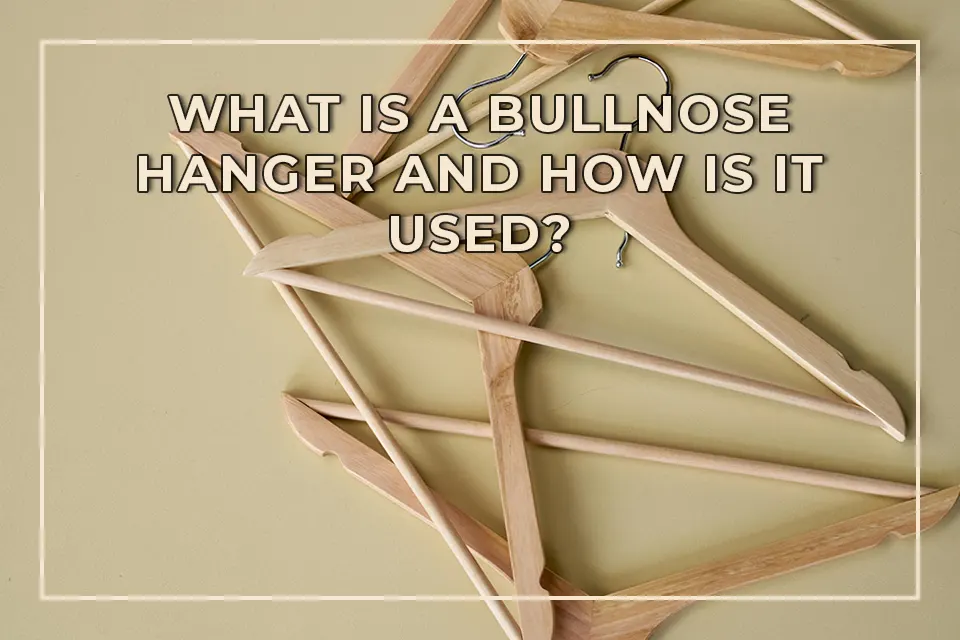DIY Closet
Elegant and Timeless: Light Grey House with Black Trim

[ad_1]
Are you looking for a classic and sophisticated look for your home? In this article, we will discuss the elegant and timeless appeal of a light grey house with black trim. From the exterior to the interior, we will explore how this color combination can elevate the overall aesthetic of your home. Whether you’re considering a fresh paint job or are in the midst of designing a new home, this color scheme is a timeless choice that can add a touch of modern elegance to any property.
Why Light Grey and Black Trim?
When it comes to exterior design, the color scheme of a house can make a big impact in creating an inviting and stylish appearance. The combination of light grey with black trim offers a modern and elegant look that stands the test of time. The light grey provides a neutral backdrop that complements the surrounding landscape, while the black trim adds a touch of sophistication and contrast. Together, these two colors create a timeless appeal that can enhance the overall curb appeal of a home.
Additionally, light grey and black trim are versatile and can work well with a variety of architectural styles. Whether you have a contemporary or traditional home, this color combination can seamlessly blend with the existing design, making it a great choice for homeowners who want to refresh their exterior without a complete overhaul.
Exterior Design
When it comes to the exterior of a light grey house with black trim, there are a few key elements that play a role in creating a cohesive and elegant look. The use of light grey for the main body of the house provides a soft and neutral backdrop, allowing the architectural details to stand out. The black trim, on the other hand, adds definition and contrast to the windows, doors, and other architectural features, creating a striking visual impact.
For a DIY project, consider repainting the exterior of your home with a fresh coat of light grey paint and adding black accents to the trim. This simple yet effective update can instantly elevate the overall aesthetic of your home and give it a timeless appeal. Whether you opt for a matte or glossy finish, the combination of light grey and black trim can create a sophisticated look that is sure to impress.
Interior Design
The elegance of a light grey house with black trim doesn’t stop at the exterior. When you step inside, this color combination can continue to make a statement. In the interior, the light grey walls provide a neutral backdrop that can complement a wide range of decor styles, while the black trim adds a touch of drama and sophistication.
For a DIY project, consider adding black trim to your interior doors, windows, and baseboards to create a cohesive and stylish look. Pair this with light grey walls and you’ll have a timeless and sophisticated interior that exudes elegance. Additionally, you can add black accents through furniture, decor, and accessories to tie the whole look together.
Maintenance and Durability
One of the many benefits of a light grey house with black trim is its low maintenance and durability. Light grey is less prone to showing dirt and grime compared to lighter colors, making it an ideal choice for the exterior. The black trim, when properly sealed and painted, can withstand the elements and maintain its sleek appearance for years to come.
When it comes to maintenance, regularly cleaning the exterior and touching up the paint as needed can keep your light grey house with black trim looking elegant and timeless. Additionally, using high-quality paint and materials during the initial application can ensure that the colors stay vibrant and fresh for years to come.
Conclusion
A light grey house with black trim is a timeless and elegant choice for any homeowner looking to elevate the overall aesthetic of their property. From the exterior to the interior, this color combination offers a sophisticated look that can complement a variety of architectural styles. Whether you’re considering a DIY project or hiring professionals, the end result is a classic and stylish home that exudes modern elegance.
FAQs
1. Are light grey and black trim suitable for any architectural style?
Yes, the combination of light grey with black trim can work well with a variety of architectural styles, including contemporary and traditional homes. The neutral nature of light grey allows it to complement different designs, while the black trim adds a touch of sophistication.
2. How can I incorporate the light grey and black trim color scheme into my home on a budget?
Consider repainting the exterior of your home with a light grey color and adding black accents to the trim as a cost-effective DIY project. You can also add black trim to your interior doors and windows to create a cohesive and stylish look without breaking the bank.
3. How do I maintain the elegance of a light grey house with black trim?
Regularly cleaning the exterior and touching up the paint as needed can keep your light grey house with black trim looking elegant and timeless. Using high-quality paint and materials during the initial application can also ensure long-lasting vibrancy and freshness.
4. Are there any other color combinations that work well with light grey and black trim?
Yes, light grey and black trim can be complemented by a variety of accent colors, including white, silver, or even pops of bold hues. Experiment with different accents in your decor and accessories to create a personalized and stylish look.
5. Can I use light grey and black trim in smaller homes or spaces?
Yes, the light grey and black trim color scheme can work well in smaller homes or spaces. The neutral nature of light grey can help create a feeling of spaciousness, while the black trim adds a touch of contrast and sophistication, making it a versatile choice for any size property.
[ad_2]
DIY Closet
What Causes Black Mold on Cinder Blocks?

Black mold can be a concerning issue for homeowners, especially when it appears on cinder blocks. This article explores the factors that contribute to the growth of black mold on these concrete materials. Understanding the causes can help in prevention and remediation, ensuring a healthier living environment.
Understanding Cinder Blocks
Cinder blocks, also known as concrete masonry units (CMUs), are lightweight building materials made from a mixture of cement and aggregate, typically ash or slag. These blocks are commonly used in construction for walls, foundations, and other structural purposes. They are durable, fire-resistant, and provide good insulation properties.
While cinder blocks are robust, they can be susceptible to black mold growth under certain environmental conditions. The porous nature of cinder blocks allows moisture to enter, which creates an ideal breeding ground for mold spores. Recognizing the causes of mold growth on these surfaces can help homeowners take proactive measures to prevent this issue.
Excess Moisture as a Primary Cause
The presence of excessive moisture is the primary factor that contributes to black mold growth. Cinder blocks can absorb water like a sponge due to their porous structure. When rainwater leaks into walls, or when humidity levels are high, the moisture within the blocks can remain trapped, leading to mold growth.
In basements, crawl spaces, or areas with poor ventilation, humidity is often higher than in other parts of the home. This environment can become a breeding ground for mold spores, especially if water seeps through cracks or around the foundation. Therefore, maintaining low humidity levels and ensuring proper drainage can help mitigate the chances of mold developing on cinder blocks.
Poor Ventilation Increases Mold Growth Risks
Another contributing factor to the growth of black mold on cinder blocks is poor ventilation. Areas with limited airflow can quickly become damp, creating an ideal environment for mold. Cinder block walls, especially in basements and utility rooms, may not get adequate ventilation, leading to stagnant air and moisture accumulation.
To combat this issue, homeowners should consider improving airflow in these areas. This may involve installing vents, using exhaust fans, or simply keeping doors and windows open to increase circulation. Good ventilation can help reduce humidity levels and dry out any moisture present on cinder blocks, thereby hindering mold growth.
Condensation: A Hidden Cause
Condensation often goes unnoticed but can be another hidden cause of black mold on cinder blocks. When warm, humid air comes into contact with cooler surfaces, such as cinder block walls, moisture in the air condenses into water droplets. This can create a damp environment where mold can thrive.
To reduce condensation, it is important to manage indoor humidity levels. Using dehumidifiers and maintaining a consistent temperature throughout the home can help prevent the conditions that lead to condensation. Additionally, insulating cinder block walls can help reduce temperature differences, minimizing the risk of moisture accumulation.
Cracks and Leaks: Pathways for Mold
Physical damage to cinder blocks, such as cracks or leaks, can provide pathways for water to enter, increasing the likelihood of mold growth. These flaws can be the result of settling foundations, weathering, or other forms of wear and tear over time. Once water begins to infiltrate through these cracks, it can become trapped within the blocks, fostering an environment ripe for mold development.
Homeowners should regularly inspect their cinder block structures for signs of damage. Timely repairs can prevent small issues from becoming larger ones. Sealing cracks and repairing leaks with appropriate materials will help keep moisture from entering the blocks, reducing the potential for mold growth.
Organic Material: A Nutrient Source for Mold
While cinder blocks themselves do not provide organic material for mold, other building materials and environmental factors can introduce nutrients that support mold development. For instance, dirt, dust, and debris settling on the surface of the blocks can provide a food source for mold spores. Additionally, if there are any wooden structures or organic matter nearby, they can contribute further to mold growth.
To reduce the presence of organic material, regular cleaning of cinder block surfaces is essential. Sweep or vacuum away dirt and dust to minimize the organic nutrients available for mold. Furthermore, addressing any nearby sources of organic matter, such as decaying plants or wood, can also help control mold growth.
Temperature Conditions Favoring Mold
Temperature plays a critical role in mold growth, with warmer conditions being more conducive to development. Black mold thrives in temperatures between 60°F and 80°F, making it particularly problematic during warm summer months when humidity levels can also rise.
To combat these conditions, maintaining a consistent and comfortable indoor temperature can help inhibit mold development. Using air conditioning during hot weather can help lower humidity levels and create an environment that discourages mold.
Importance of Regular Maintenance
Regular maintenance of your home is crucial in preventing mold growth on cinder blocks and other surfaces. This includes checking for moisture issues, ensuring good drainage around the property, and conducting regular inspections. Moreover, keeping gutters clean and ensuring downspouts direct water away from the foundation can significantly reduce the risk of water intrusion.
Investing time in routine checks can save homeowners from costly mold remediation efforts in the long run. A proactive approach not only addresses current issues but also helps identify potential problems before they become severe.
Remediating Mold on Cinder Blocks
If black mold is already present on cinder blocks, immediate action is necessary. The first step is to assess the extent of the mold growth. For small areas, a DIY approach may suffice. Homeowners can use a mixture of water and detergent to scrub the mold off the surface. Protective gear, such as gloves and a mask, should be worn to avoid inhaling mold spores.
In more severe cases, hiring a professional mold remediation service is advisable. They have the expertise and equipment to effectively remove mold and address the underlying moisture issues that allowed it to grow in the first place.
Conclusion
Black mold on cinder blocks poses risks to both the integrity of your home and the health of its occupants. Understanding the causes—such as excessive moisture, poor ventilation, cracks, condensation, and the presence of organic material—can empower homeowners to take preventative measures. Regular maintenance and timely repairs play crucial roles in creating an environment unfriendly to mold. By staying vigilant, homeowners can enjoy a safe, healthy living space free from the dangers of black mold.
FAQs
1. What are the health effects of black mold exposure?
Black mold exposure can cause various health issues, particularly respiratory problems, allergies, and headaches. It is essential to address mold growth promptly to mitigate these health risks.
2. Can I remove black mold from cinder blocks myself?
Yes, for small areas, you can remove black mold using a mixture of detergent and water. However, protective gear is recommended, and for larger infestations, professional help may be necessary.
3. How can I prevent black mold from returning after remediation?
To prevent black mold from returning, ensure good ventilation, control humidity levels, repair leaks, and keep the cinder block surfaces clean and dry.
4. Is it possible to seal cinder blocks against moisture?
Yes, applying a waterproof sealant can help protect cinder blocks from moisture intrusion, reducing the risk of mold growth.
5. How often should I check for mold in my home?
Regular checks are advisable, especially in areas prone to moisture like basements and crawl spaces. Aim for at least once every season, or more frequently if you notice any signs of water intrusion or humid conditions.
DIY Closet
What Is a Bullnose Hanger and How Is It Used?

A bullnose hanger is a specialized type of hardware used primarily in construction and home improvement projects. Designed for strength and versatility, it supports a variety of applications, especially when it comes to hanging items like shelves, artwork, and other fixtures. Understanding bullnose hangers can enhance your DIY skills and improve your home’s functionality.
What is a Bullnose Hanger?
Bullnose hangers are heavy-duty brackets often utilized for hanging objects securely onto walls or ceilings. Their unique design features a rounded edge or “bullnose,” which offers more surface area for weight distribution. This characteristic makes them ideal for applications requiring stability, such as supporting shelves, holding pipes, or even mounting furniture.
These hangers come in various materials, including steel and plastic. Steel bullnose hangers offer maximum durability, making them suitable for heavy loads. In contrast, plastic versions are lightweight and often used for less demanding applications. The choice of material can significantly affect the strength and purpose of the bullnose hanger.
How Bullnose Hangers are Made
The manufacturing process of bullnose hangers typically involves molding or bending metal or plastic into the desired shape. When made of metal, they might undergo processes like welding or strengthening treatments to enhance durability. After production, these hangers are often coated with protective finishes to prevent rust and ensure longevity, particularly in damp or outdoor environments.
In many cases, bullnose hangers are designed based on specific load requirements, meaning manufacturers take careful considerations into how much weight each hanger can safely bear. This attention to detail ensures that users can select the most appropriate version for their needs, providing peace of mind in their applications.
Common Uses of Bullnose Hangers
One of the primary applications for bullnose hangers is in shelving systems. When outfitting a closet or a home office, these hangers provide solid support that’s essential for preventing sagging or collapse under weight. They are also favored in garage storage solutions, where heavy tools and equipment need secure placement.
Beyond shelving, bullnose hangers are also extensively used in bathroom installations. They can securely hold towel racks, toilet paper holders, and other accessories that withstand daily usage. This reliability makes it an attractive option for homeowners looking to enhance functionality while maintaining a clean aesthetic.
Additionally, bullnose hangers find their place in fast-growing gardening and landscaping projects. For example, they can be applied to support various piping systems or even assist in hanging garden tools. Their versatility makes them valuable in almost every area of home improvement.
How to Install a Bullnose Hanger
Installing a bullnose hanger is a straightforward process but requires attention to detail. Begin by choosing the appropriate location for your hanger and marking drilling points with a level to ensure that your item will hang evenly. It’s vital to bear in mind that the weight of what you intend to hang will determine the size and number of hangers needed.
Next, drill holes at the marked points, ensuring that you have the right drill bit size to fit your chosen anchors (if using). Insert wall anchors as needed; these add an extra layer of support, especially when dealing with drywall or other softer materials. Once your anchors are secure, position the bullnose hanger and screw it in place utilizing the necessary hardware.
After attaching the hanger, double-check its stability by gently pulling or pressing on it. If it feels secure, you can confidently mount your items. This step is crucial for safety as a poorly installed hanger may lead to accidents or damage down the line.
Tips for Choosing the Right Bullnose Hanger
When selecting a bullnose hanger, consider a few factors to ensure you make the best choice. First, gauge the weight of the items you plan to hang. Each hanger has a specific weight limit, and exceeding this can lead to failure. Check the manufacturer’s specifications for details to avoid any mishaps.
Next, consider the material of the hanger. For lighter applications, plastic hangers may suffice, whereas heavier tasks generally necessitate steel or other durable materials. This choice can also influence the hanger’s ability to resist corrosion and wear, particularly in outdoor settings.
Lastly, think about the design elements you want to incorporate into your space. Bullnose hangers come in various styles and finishes, allowing you to select options that fit your aesthetic preferences. Whether you prefer a minimalist look or something more ornate, there are variations available to suit diverse tastes.
Everyday Applications in Different Environments
Bullnose hangers are not just limited to residential settings. They’re also commonly found in commercial environments, including retail spaces, offices, and warehouses. Business owners often use them for organizing tools, hanging signage, or ensuring safety equipment is easily accessible.
In educational environments, classrooms and workshops benefit from bullnose hangers as well. They can support project supplies such as art materials, tools, or any other frequently used items. This helps keep spaces tidy and allows for smooth workflows, emphasizing the multifunctionality of these hangers.
For DIY enthusiasts, integrating bullnose hangers into various projects can serve as a starting point for more complex builds. With their sturdy makeup, hangers provide reliable support for features like custom-built desks, shelves, or even cabinetry, making them essential in any DIY toolbox.
Maintenance of Bullnose Hangers
Taking care of bullnose hangers can prolong their lifespan and ultimately safeguard your possessions. Regularly check for rust, especially if they are located in a high-moisture area. If rust appears, sanding and then repainting can help restore their protective finish.
Furthermore, inspect for any signs of stress or wear. This includes checking the securing screws and ensuring they are tight and stable. If you notice any signs of damage or loosening, replacing the hanger before it fails will help avoid accidents and maintain safety.
Conclusion
Bullnose hangers are invaluable tools in both home improvement and professional settings. Their unique design not only offers strength and stability but also versatility for a wide range of applications. By understanding what they are, how they’re used, and tips for selection and installation, homeowners and DIY enthusiasts can reap the benefits of these functional components. Investing time in understanding and utilizing bullnose hangers can contribute significantly to a well-organized, efficiently functioning space.
FAQs
1. Can bullnose hangers be used both indoors and outdoors?
Yes, bullnose hangers can work well in both indoor and outdoor settings, provided you choose the appropriate material. Steel hangers are preferable outdoors due to their durability and resistance to weather conditions.
2. Are bullnose hangers adjustable?
Most bullnose hangers are fixed and designed for a specific use, but some adjustable variants may be available. Check the specifications beforehand if flexibility is needed for your application.
3. Can I paint bullnose hangers to match my decor?
Yes, you can paint bullnose hangers. Just ensure you use a suitable primer and paint that adheres well to the material of the hanger for the best results.
4. What tools are needed for installing bullnose hangers?
Basic tools for installation include a drill, screwdriver, level, measuring tape, and a pencil for marking. Depending on the installation surface, you may also need wall anchors.
5. How much weight can a bullnose hanger support?
The weight capacity of a bullnose hanger depends on its material and size. Always refer to the manufacturer’s guidelines for precise weight limits to ensure safety.
DIY Closet
What Makes the Rheem Classic Super Quiet 80 a Top Choice for Homeowners?

The Rheem Classic Super Quiet 80 is a premier choice for homeowners seeking efficient, reliable heating while enjoying minimal noise disruption. Its advanced design and technology provide a range of benefits that enhance comfort and energy efficiency, making it a standout option for any household. Let’s explore the features, benefits, and reasons why this unit is a top pick.
Exceptional Noise Reduction Features
One of the standout features of the Rheem Classic Super Quiet 80 is its remarkably low noise level. Utilizing innovative engineering, Rheem has successfully minimized operational sounds, allowing it to blend seamlessly into the home environment. The sound levels of this model are often compared to that of a refrigerator, drastically reducing the typically noisy atmosphere associated with other heating systems.
The sound-reducing capabilities stem from several aspects of its design. Enclosed fan motors and insulated cabinets significantly dampen vibrations and noise. This is especially beneficial for homes in which the heating unit is located near living spaces or bedrooms, providing a more tranquil and comfortable atmosphere. Homeowners will appreciate the peace that comes along with efficient heating, especially in quieter evening hours.
Energy Efficiency and Performance
The Rheem Classic Super Quiet 80 is not just quiet; it’s also incredibly energy-efficient. This unit is designed to deliver substantial heating capacity without consuming excessive energy. Its high-efficiency rating means that homeowners can expect lower utility bills, which is a significant factor in long-term savings.
This model features a dual-fuel capability, allowing it to utilize both gas and electric heating depending on what is more cost-effective at any given time. This provides flexibility and ensures that homeowners are always using the most economical heating option available. The combination of efficiency and advanced technology leads to optimized performance that adapts to varying weather conditions, maintaining a consistent temperature indoors throughout the year.
Smart Technology Integration
In today’s digital age, many homeowners prioritize technology integration in their household appliances. The Rheem Classic Super Quiet 80 embraces this trend by offering smart technology compatibility. Homeowners can control settings remotely using their smartphones or smart home systems, allowing for greater convenience and flexibility.
This smart feature enables users to adjust heating schedules, monitor system performance, and receive maintenance alerts right from their mobile devices. By having this control at their fingertips, homeowners can ensure their space remains comfortable while minimizing energy waste. Such smart integrations can also enhance the overall value of the home, appealing to tech-savvy buyers should the property ever hit the market.
Reliable Performance and Longevity
Homeowners want a heating system that they can rely on, and the Rheem Classic Super Quiet 80 does not disappoint. Built with durable materials and designed to withstand various weather conditions, this unit is intended for long-term use.
The manufacturer employs rigorous quality checks in the production process, ensuring that only the most reliable units make it to the market. Many users report a service life exceeding the standard expectations for similar products. Regular maintenance and care will further extend its longevity, making it a worthwhile investment for homeowners.
Ease of Installation and Maintenance
Another reason homeowners favor the Rheem Classic Super Quiet 80 is its ease of installation and maintenance. The unit is designed to be user-friendly, which means that installation can often be completed without extensive renovations or modifications to the home. This aspect is essential for those looking to save time and money during installation.
After installation, the unit continues to shine in terms of maintenance. The access panels are easily removable, allowing for straightforward servicing. Regular cleaning and checks can be performed with minimal hassle, ensuring the system operates efficiently for many years. For those homeowners who prefer to handle their home maintenance, the Rheem unit stands out as an accessible choice.
Eco-Friendly Features
In an era where environmental concerns are becoming increasingly urgent, homeowners are searching for eco-friendly options. The Rheem Classic Super Quiet 80 aligns with these values by utilizing energy-efficient technologies and reducing gas emissions. The model meets strict EPA guidelines, offering a sustainable heating solution without compromising on performance.
By choosing this system, homeowners can take pride in their investment, knowing they are making a responsible choice that benefits not just their household but the planet as well. This eco-conscious consideration can influence property values positively, appealing to environmentally mindful buyers in the future.
Versatile Design Options
The Rheem Classic Super Quiet 80 comes in a variety of design options to best fit the aesthetic of any home. Its modern finishes and compact design allow it to blend seamlessly with various interior spaces without being an eyesore.
This versatility also extends to different types of homes, whether they are single-family residences, condos, or townhouses. The ability to select a unit that matches one’s décor while providing superior heating is a considerable benefit. Homeowners can achieve both comfort and style with Rheem’s thoughtfully designed systems.
Solid Warranty and Customer Support
Opting for a heating system that provides solid warranty coverage is crucial for homeowners. The Rheem Classic Super Quiet 80 comes with an impressive warranty that protects against potential defects in workmanship and material. This assurance means that homeowners can feel confident in their investment knowing that they are covered should issues arise.
Additionally, Rheem’s customer service team is known for being responsive and helpful, further adding to their positive reputation. Whether it’s questions about installation, troubleshooting, or routine maintenance, homeowners can expect support from knowledgeable staff who can guide them through any concerns.
Conclusion
The Rheem Classic Super Quiet 80 stands out as a leading option for homeowners seeking an efficient, quiet, and reliable heating solution. Its various features, including excellent noise reduction, energy efficiency, smart technology capabilities, reliability, and eco-friendly design, make it a top choice in home comfort solutions. Investing in this model not only leads to improved comfort within the home but also yields long-term savings and a responsible choice for the environment.
With technological advancements, user-friendly design, and strong customer support, this Rheem model proves to be a dependable option for modern homeowners. For anyone considering a heating upgrade, the Rheem Classic Super Quiet 80 is an investment worth making.
FAQs
- How do I clean and maintain the Rheem Classic Super Quiet 80?
Regular maintenance includes checking and replacing filters, cleaning the vents, and ensuring that the external components are free from debris. It might be advisable to schedule annual servicing with a professional technician for optimal performance. - What is the average lifespan of the Rheem Classic Super Quiet 80?
With proper maintenance, the Rheem Classic Super Quiet 80 can last between 15 to 20 years, significantly exceeding average expectations for standard heating systems. - Can the Rheem Classic Super Quiet 80 work in both winter and summer?
While its primary function is to heat, if the model includes a heat pump feature, it can also provide cooling during summer months. Check the product specifications for details. - How does the energy efficiency of this unit compare to others?
It boasts a high-efficiency rating typically higher than standard models, leading to significant energy savings compared to many competitors in its class. - Is professional installation required for this unit?
While DIY enthusiasts might be able to install it, professional installation is often recommended to ensure safety and optimal performance, as well as to maintain warranty coverage.

 DIY Closet1 year ago
DIY Closet1 year agoHow to troubleshoot and reset the red light on your Aquaguard AG 3000E

 DIY Closet1 year ago
DIY Closet1 year agoHow to Install a Drop-In Sink Without Clips: A Step-by-Step Guide

 Bug Fixing1 year ago
Bug Fixing1 year agoUnderstanding the Cost of Furnace Collector Box Replacement: What to Expect

 DIY Closet1 year ago
DIY Closet1 year agoPergola Design: Understanding the Maximum Span for 6×6 Beams

 DIY Closet1 year ago
DIY Closet1 year agoThe Best Nails for Luan: A Comprehensive Guide

 Bug Fixing1 year ago
Bug Fixing1 year agoPigtail vs Daisy Chain Outlets: Which is Better for Your Home?

 DIY Closet1 year ago
DIY Closet1 year agoHow to Build a Free Standing 6×6 Post Swing Set: A Step-by-Step Guide

 DIY Closet1 year ago
DIY Closet1 year agoUnderstanding the Benefits of a 400 Amp Meter Base with Two 200 Amp Disconnects




















